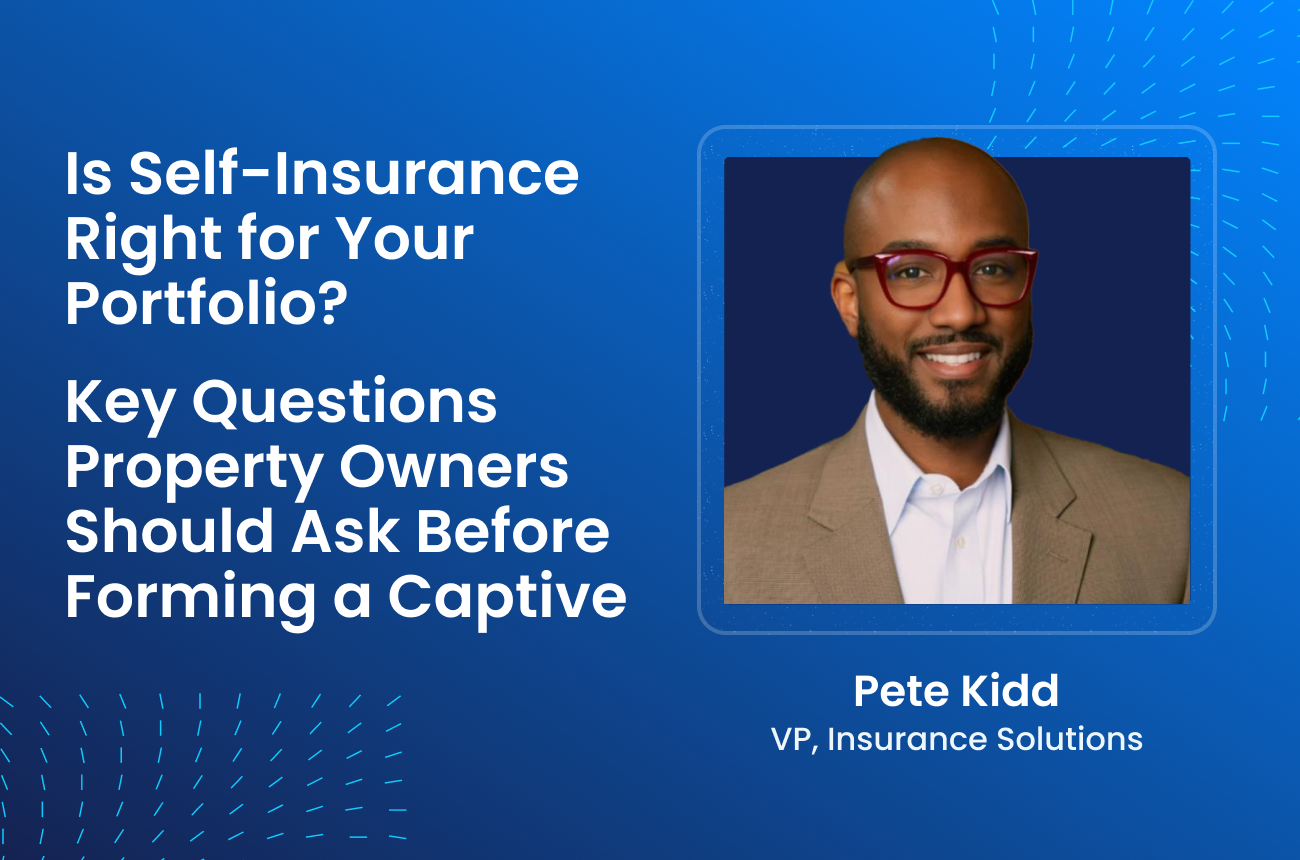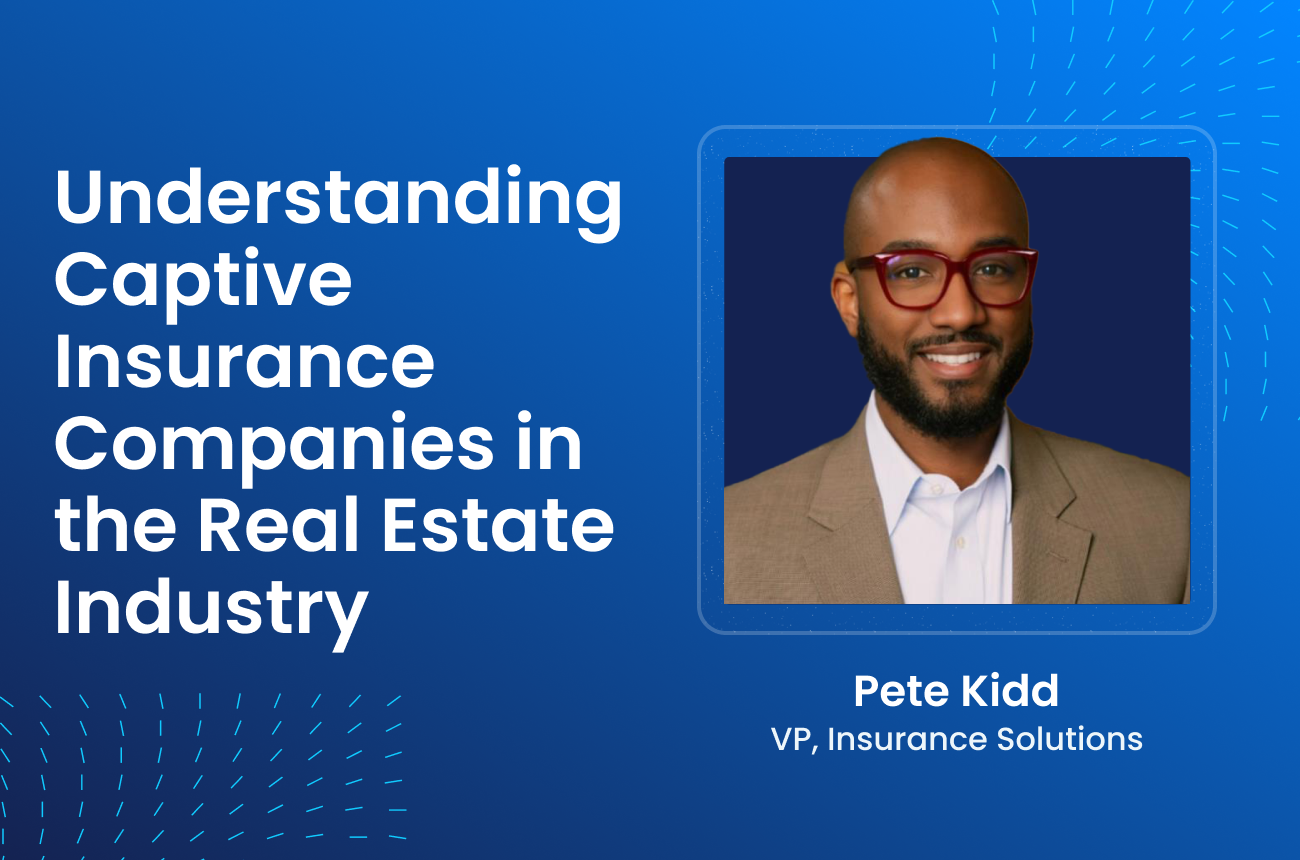The multifamily real estate industry is fast-moving and highly competitive, pushing property owners and operators to find smarter, more efficient ways to manage risk while boosting profitability. One increasingly popular approach is self-insurance through the formation of a captive insurance company. Captives are insurance entities owned and controlled by the company they insure — in this case, the property owner or operator — and are designed to provide customized coverage for operational risks. This type of arrangement is gaining traction in the multifamily sector, especially as owners seek more control over loss management, cost reduction, and profit retention.
What Is a Captive Insurance Company?
What exactly is a captive insurance company? In short, it’s a licensed insurance entity, typically managed by an experienced third-party captive manager and authorized by a state’s department of insurance. Captives can be structured in different ways, from forming a fully-owned Single Parent Captive that provides complete control, to creating a cell within a Protected Cell Captive (PCC) to focus on a specific risk area, such as tenant-caused property damage. These structures offer a range of benefits, including more targeted coverage, improved financial predictability, and in the case of PCCs, lower startup costs and faster implementation.
Key Questions to Ask Before Forming a Captive
While the concept of self-insurance is appealing, it’s not suitable for everyone. Property owners need to assess a few key factors before forming a captive:
Unit Count
The first consideration property owners need to assess is the size of their portfolio. Captives are most effective when supported by scale. Owners with larger portfolios are better positioned to distribute risk and take advantage of cost efficiencies. Generally, 5,000 units is the benchmark at which forming a captive becomes financially viable. Below this level, costs can outweigh benefits, but owners on a clear growth trajectory may still be well-positioned in the near future. Risk pooling across a larger number of units also stabilizes claims activity and helps predict losses more accurately — two critical components of a successful captive.
Capital Availability
The next question is whether you have sufficient capital to fund and operate a captive. Captives come with upfront costs — such as licensing, actuarial analysis, and regulatory filings — as well as ongoing financial commitments like claims funding, administrative expenses, and audits. Captives must remain solvent even in high-loss years, which means having access to reserves and sufficient liquidity. For those who are interested in the benefits of a captive but are concerned about costs, Foxen offers a solution through WaiverCell, a protected cell captive structure that covers many of the startup and operational costs, making it a more accessible entry point into self-insurance.
Claims/Loss History
Another key consideration is your organization’s claims history. Captives work best when losses are predictable and infrequent. If you have a solid track record with few large or frequent claims, self-insurance could provide substantial financial benefits. However, if your loss history shows high volatility, a traditional insurance model may offer better protection. Your historical data will also play a significant role in determining reserve requirements — how much capital you need to set aside to cover expected claims.
Risk Tolerance
Risk tolerance is also a vital piece of the puzzle. Self-insurance means assuming more risk internally rather than transferring it to a third-party insurer. Owners must ask themselves: Are we comfortable taking on more financial risk? Do we have the reserves and operational flexibility to manage large, unexpected claims? Property owners with higher risk tolerance — and who are currently paying high premiums to traditional carriers — often find that captives offer a lower long-term cost structure and potential for underwriting profit retention.
Enrollment Rate
Closely tied to risk and revenue is your expected waiver enrollment rate. In programs where the captive covers tenant-caused property damage, revenue is often driven by how many units participate. The higher the enrollment rate, the more funding is available to cover claims and operational costs. Before forming a captive, it's critical to estimate your expected enrollment and evaluate your ability to maintain high participation rates across your properties.
Foxen’s Solutions: WaiverCell and WaiverFlex
Once you’ve evaluated these five areas — unit count, capital availability, claims history, risk tolerance, and waiver enrollment — you’ll be in a strong position to explore your options for forming a captive. Foxen offers two primary pathways. The first is WaiverCell, a turnkey protected cell captive solution that allows owners to self-insure against tenant-caused damage with lower financial and administrative barriers. Foxen handles the cell formation, regulatory coordination, claims processing, and program administration, making it a streamlined solution for owners who want speed, simplicity, and cost savings.
The second option is WaiverFlex, which supports property owners who already have their own captive or want to establish a standalone Single Parent Captive. This route provides full control and flexibility to insure multiple lines of risk beyond just tenant damage. However, it also requires greater legal, financial, and operational investment. Foxen can assist by referring owners to experienced third-party captive managers for full setup and compliance support. In both options, property owners continue to benefit from Foxen’s leading waiver program administration and compliance monitoring services.
Is a Captive Right for Your Portfolio?
Captive insurance companies are a powerful risk management tool for multifamily property owners — but only when the structure fits the needs and capabilities of the portfolio. If you have at least 5,000 units (or plan to), strong financial backing, a solid claims history, high risk tolerance, and a reliable waiver enrollment strategy, you may be an excellent candidate for forming a captive. Whether through Foxen’s WaiverCell or a more custom structure like a Single Parent Captive, the opportunity to gain control, reduce costs, and drive profit is real.
Let’s make self-insurance simple. Talk to our team today.




